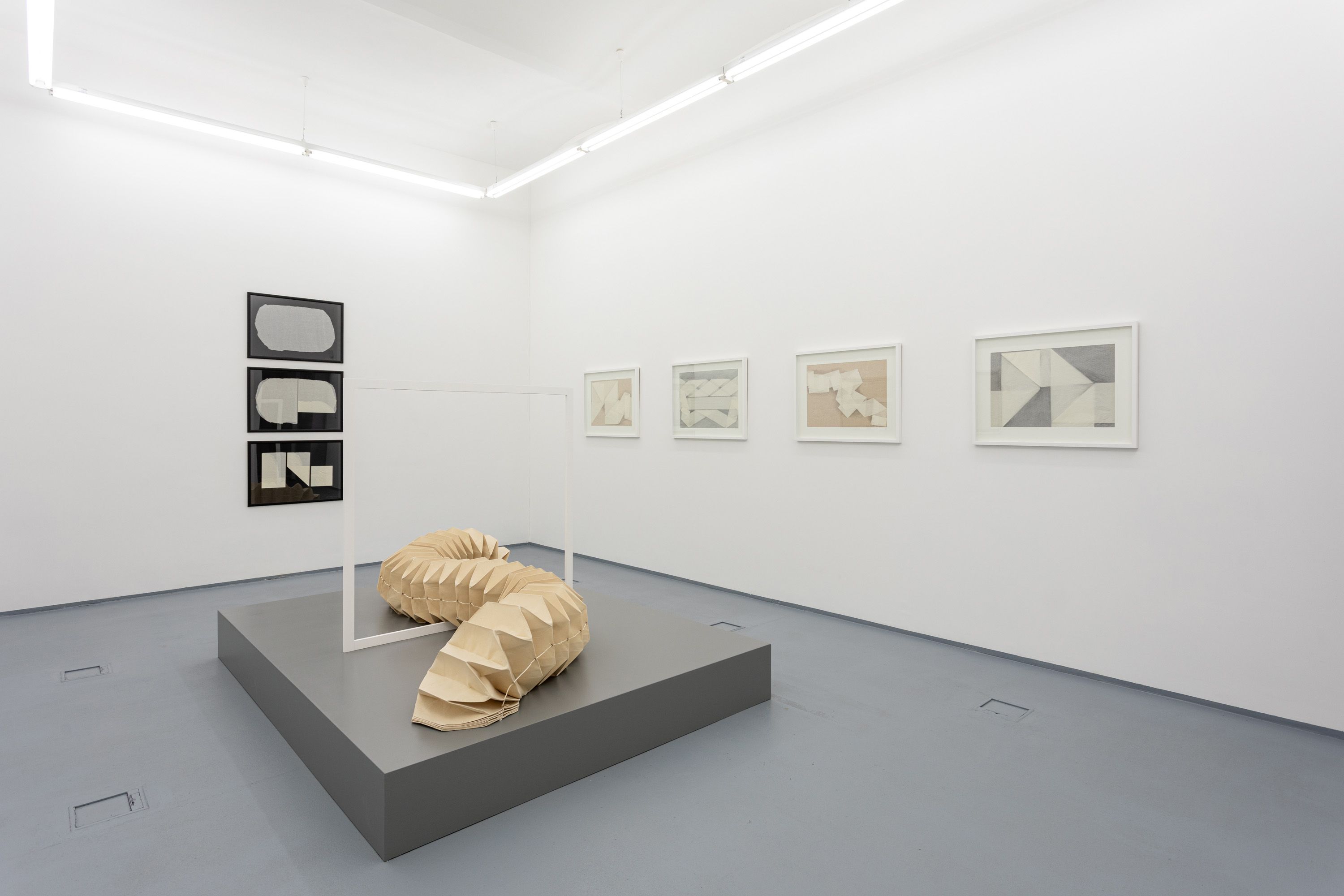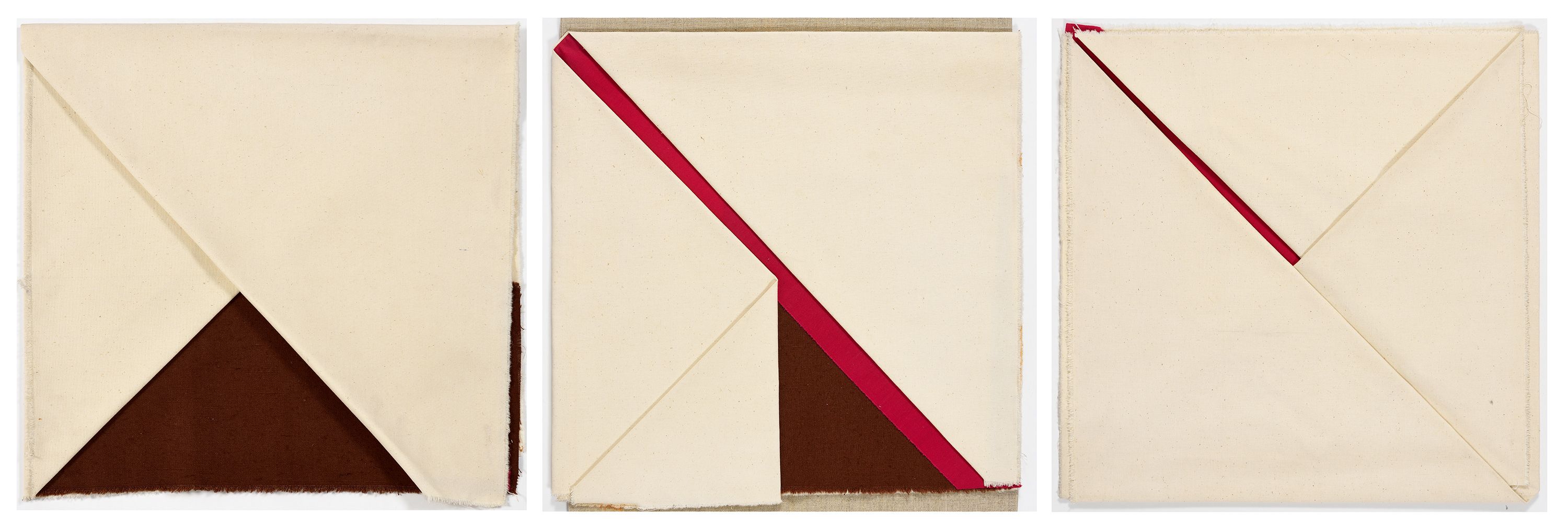Margit Szilvitzky
Finding the Square
| Venue: | acb Attachment |
| Date: | Apr 15 – May 21, 2021 |
Description
Margit Szilvitzky’s (1931-2018) name has become inseparable from the breakthrough of Hungarian fibre art and its heyday in the seventies. Artists working in this area regarded textile as a primary, autonomous medium, and – in parallel to its emancipation from the applied arts – they addressed contemporary issues and questions arising in international art discourse. As of the 1970s, operating outside the traditional categories of high art and on the periphery of political attention, the Szombathely Biennials offered an institutional framework for experimental approaches to textile/fibre art. In addition to Gábor Attalai and Zsuzsa Szenes, Szilvitzky was also among the artists who participated in the story of the ‘new textile’ movement not only as a regular and prominent exhibitor, but also as a shaper of key events.
The exhibition entitled Finding the Square, now presented at acb Attachment, showcases a selection of Margit Szilvitzky’s textile works from the seventies. Following her early artistic period, inspired by the history of apparel, folk art and the neo-secessionist style, the artist turned to white canvases in the second half of the seventies. It was also during this time that she turned her attention to the square as Malevichian ’pure form’ (in addition to other basic geometric shapes). This new direction was aptly demonstrated by her emblematic process work, entitled Finding the Square (1975). The square – reflecting on the traditions of suprematism, De Stijl and concretism – along with the emblematic grid pattern of modernism were dominant forms in Szilvitzky’s 1976 Kőszeg exhibition, which signified an important milestone in her journey toward expanding the experimental and fine art-related conceptualisation of textile. It was at this show, that 100x100 Squares – which carried the unique properties of both reliefs and panel paintings – and the work entitled Evidence, exhibited in the current show, were first presented. The artist’s serial works and process art pieces, which represented a shift toward minimal and conceptual art, drew her systematising and system-seeking attention not only to the examination of the sculptural potential of textiles and the possibilities of turning the two-dimensional plane into tree-dimensional space, but also to the exploration of light and shadow in relation to one another. This connects Szilvitzky’s works with a wide range of artists, including Péter Türk, András Mengyán, Simon Hantaï, Tibor Gáyor, Dóra Maurer, Vera Molnar, or Károly Hopp-Halász and Gyula Pauer. Szilvitzky’s exhibition held in Helsinki in 1977, represented a cornerstone in terms of her turn toward the material (the white canvas) and the concept (the mode of thinking grounded in a system of connected forms). It was also in Helsinki that the antecedent to Modulation II, the textile sculpture exhibited at acb Attachment was first showcased. Modulations, built on the ‘harmonica motif’, can be viewed either as series of modules multiplying hexagonal formations bounded by ironed edges, or as elements of shaping space in the spirit of Moholy-Nagy.
‘One of the simplest ways to shape textile is to fold it. This action will have a definite formal consequence – it will leave traces or edges – and, as such, provides elemental insight into the interior, exterior and spatial aspects of spatial form development. It was while folding canvas that I discovered those geometric formations, those relationships between congruence, symmetry and repetition, which often show kinship to the laws of natural formation’- wrote Szilvitzky in 1979. Finding her systematic method for creating variations through folding, along with the constant analysis of – and experimentation with – materials, was closely linked with the work conducted within the framework of Art Studies, a course taught by Szilvitzky at the Academy of Applied Arts, which was based on Bauhaus practice and had the development of students’ visual thinking as its objective. The methods and material-based experiments that she applied in her course – in addition to their connection to the practice of such artists as Anni Albers – were in large part inspired by the paper studies of Josef Albers (former leader of the Bauhaus Vorkurs and professor at Black Mountain College, the American centre of experimental art). This connection’s influence could be felt in the maximal economy of folded forms with respect to the material, along with the equality of visual elements, the artist’s recognition of the form-creating potential of absence, and her openness to the unexpected. The exploration and utilisation of edges and angles, their use as lines, the juxtaposed gestures of crumpling, tearing and slashing, as well as the transparency and layering brought into play by folding, were all initially realised through Szilvitzky’s experiments with paper. She then applied her paper-based observations to the even more shapeable material of textile, as well as to collages, drawings, spatial installations – and then, in the late eighties, to appliquéd and painted canvases.
Margit Szilvitzky’s oeuvre is segmented by changes of medium and shifts in perspective, which make for the profile of a diverse artist who also produced a significant body of theoretical work. Having graduated from the Academy of Applied Arts, she worked as a fashion designer before she – as a Hungarian pioneer of autonomous textile art – began to experiment with textile. As an organic development following from her experiences in textile art, Szilvitzky, in her search for new directions, turned to painting in the late eighties. Drawing, collage and experimentation with materials remained defining elements throughout her oeuvre. Her work in teaching as a faculty member of the Academy of Applied Arts was always closely connected to where she was in her art and attested to a kind of creative energy that regarded teaching itself as an artistic activity. Szilvitzky was virtually a constant participant of the Wall and Spatial Textile Biennials of Szombathely. She was also among the artists credited for laying down the foundations of the Biennials of Industrial Textile Art and for establishing the Textile Art Worksop of Velem, which became the central site of Hungarian fibre art. She was a regular participant in international exhibitions of Hungarian textile/fibre art, and she also took part in several graphic and artists’ book shows. She held solo appearances in Helsinki, Rome, at Műcsarnok/Kunsthalle Budapest, at the King St. Stephen Museum of Székesfehérvár and at the Gallery of Szombathely, among other venues. She was a recipient of the titles of Artist of Merit and Artist of Excellence, as well as the Order of Merit of the Hungarian Republic.
In connection to the exhibition, the acbResearchLab – as a new step in its endeavour to research and exhibit Hungarian experimental textile/fibre art – is publishing a volume on the period of Margit Szilvitzky’s oeuvre from 1968 to 1988, with the support of the National Cultural Fund of Hungary (NKA).
Concurrently with the solo exhibition of Margit Szilvitzky’s works at acb Attachment – through a joint collaboration between acb Gallery and Kieselbach Gallery – a selection of works by Aranka Hübner, Klára Kuchta and Margit Szilvitzky is also on view at the Kieselbach Gallery (1055 Budapest, Szent István körút 5).


